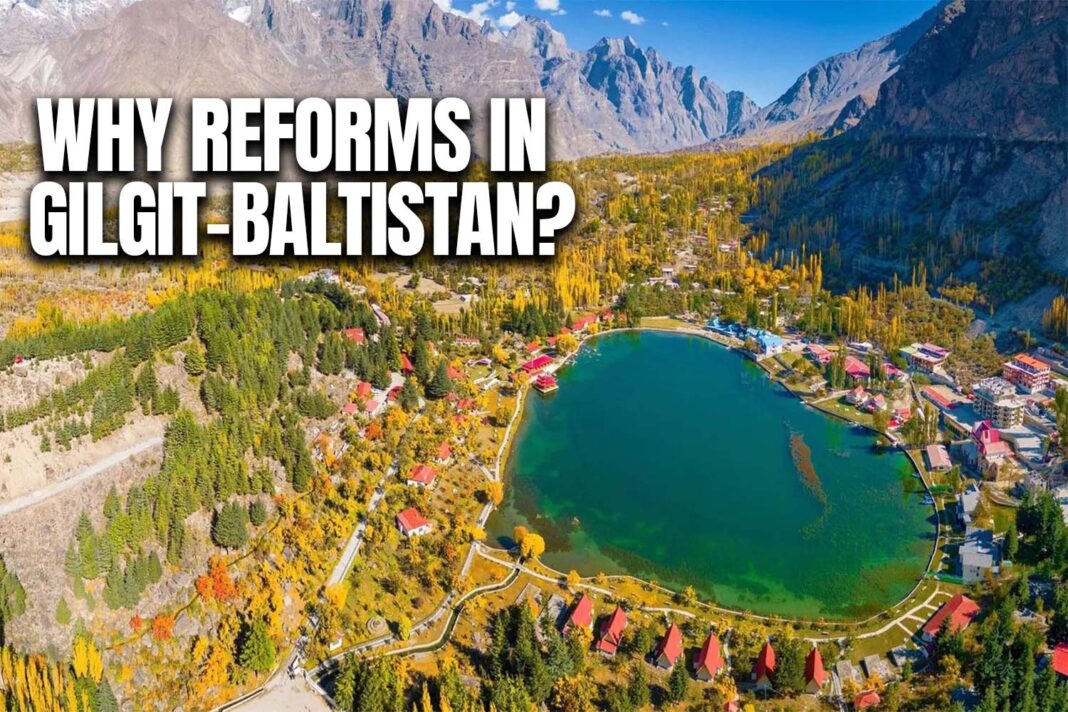Since gaining independence from Dogra Raj, Gilgit Baltistan has faced numerous socio-economic crises, necessitating reforms. Some of the socio-economic issues are discussed below.

Identity Crisis:
Soon after gaining independence, Gilgit Baltistan faced an identity crisis. The “Karachi Agreement” of April 28, 1948, included the region as part of the Kashmir dispute, placing administrative control under Pakistan. Various ordinances and presidential orders further complicated the administrative control, exacerbating the identity crisis. Despite efforts such as the Advisory Council and the Northern Area Council, the identity crisis persisted. Even in 2009, the “GB Empowerment and Self-Government Order” failed to fully address the issue.
Sectarian Conflicts:
Gilgit Baltistan, with its diverse ethnic, linguistic, and socio-cultural makeup, experienced sectarian conflicts after the 1970s. Reforms during Zia’s regime, known as “Islamization,” supported Sunni Islam, leading to increased influence of Sunni Ulemas and extremist groups. External factors, including the Islamic revolution in Iran and financial support from Saudi Arabia, further contributed to sectarian tensions. Some scholars even considered these conflicts as a “divide and rule strategy” to divert attention from political and economic grievances.
Quality Education:
While access to formal education has improved, quality higher education remains a challenge in the mountainous region. Financial issues, regular fee hikes, and incompetent administrative staff in public universities hinder higher education. Gilgit Baltistan lacks a medical and engineering university, affecting educational opportunities for its two million residents.
Health Sector:
The health sector faces challenges such as a shortage of doctors, qualified paramedical staff, and inadequate facilities. Suicide cases, particularly among young girls, have increased, highlighting the need for mental health care centers. Child mortality rates are also a concern, with variations observed between genders and urban-rural areas.
Unplanned Tourism:
While tourism has become a major income source, it has led to environmental degradation, climate change impacts, traffic congestion, pollution, and disruptions to socio-economic patterns in the region.
Climate Change:
Gilgit Baltistan is highly vulnerable to climate change due to its elevation. Glacier melting, flash floods, GLOFs, and landslides are common issues, impacting infrastructure and livelihoods.
Energy Crisis:
The region relies on hydro-power, and despite an increase in the number of power stations, an energy crisis persists, rooted in technical issues, weak infrastructure, and disputed constitutional status.
Conclusion:
After 75 years of independence, Gilgit Baltistan remains neglected. Addressing basic human and constitutional rights, along with a participatory approach involving local stakeholders, is crucial for the region’s development.
Wajhullah Fahim
Wajhullah is a research Student at Pakistan Institutes of Development Economics Islamabad.






